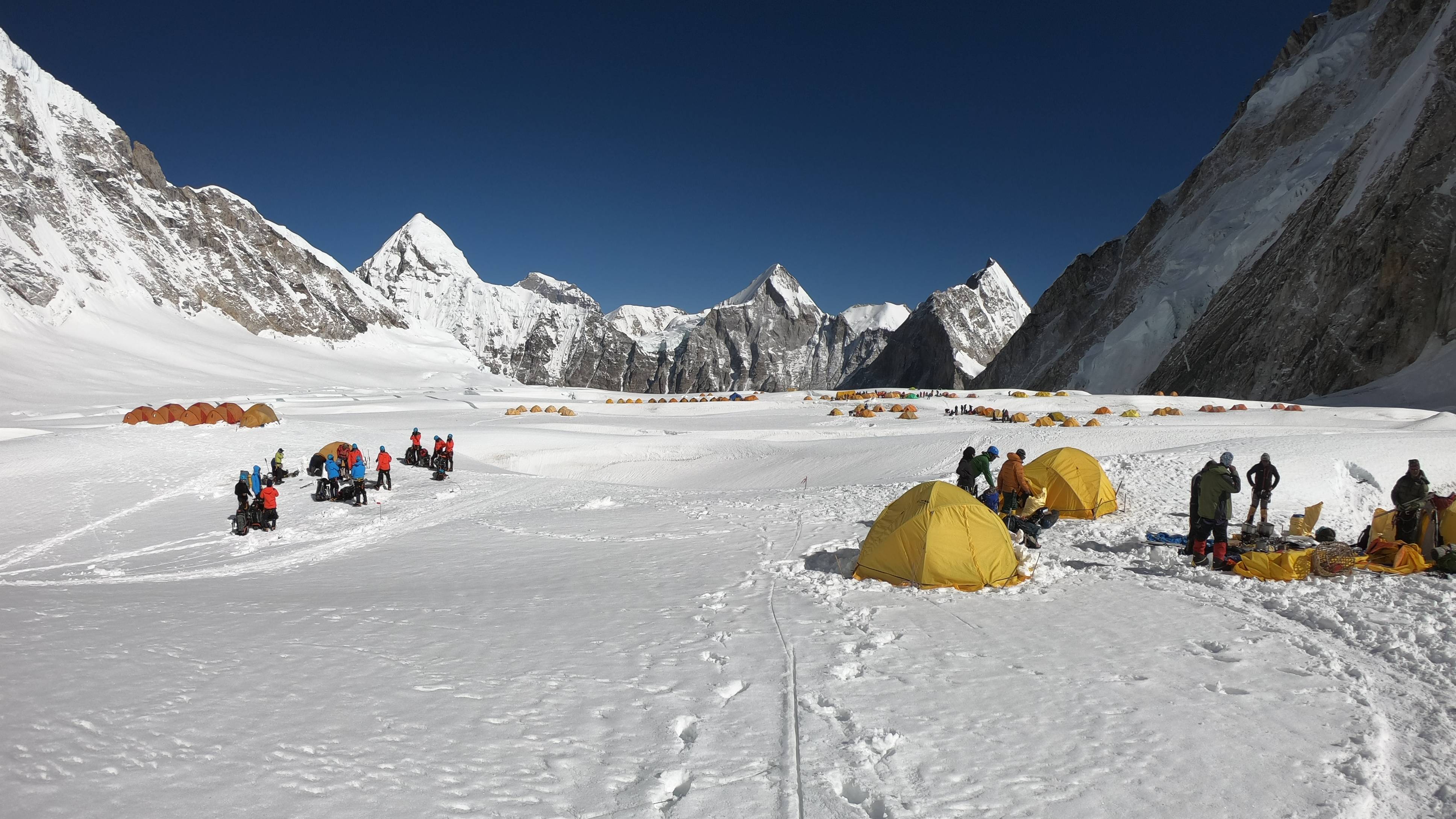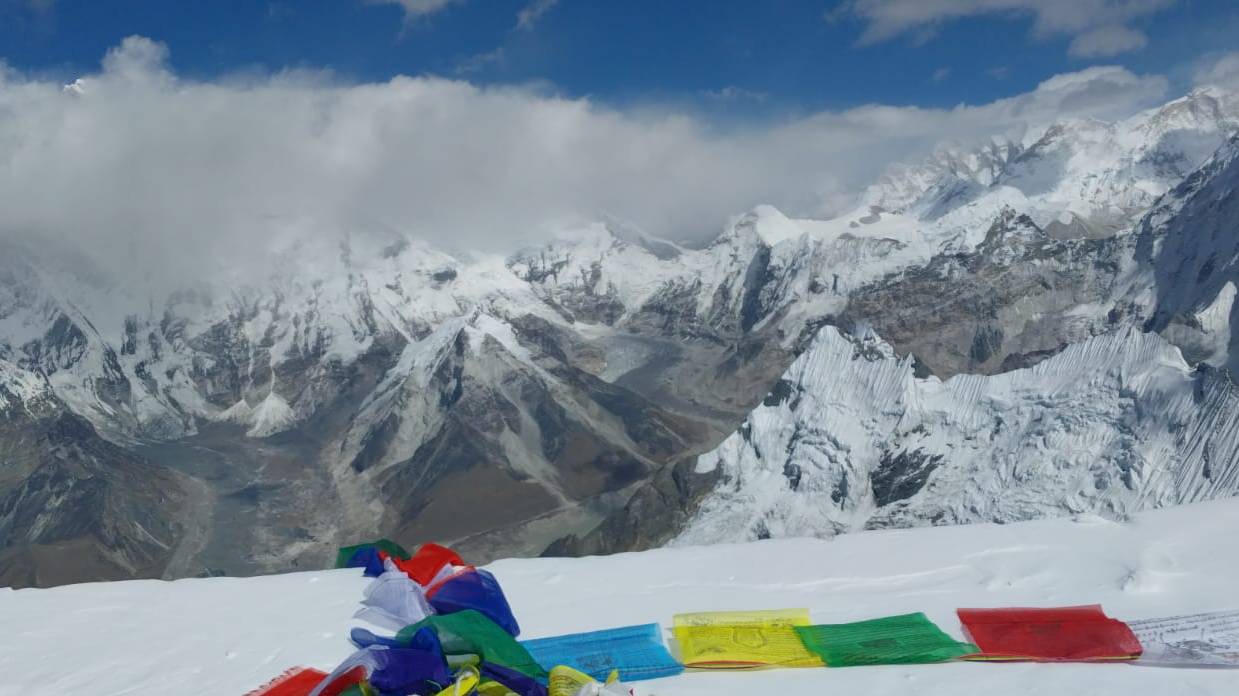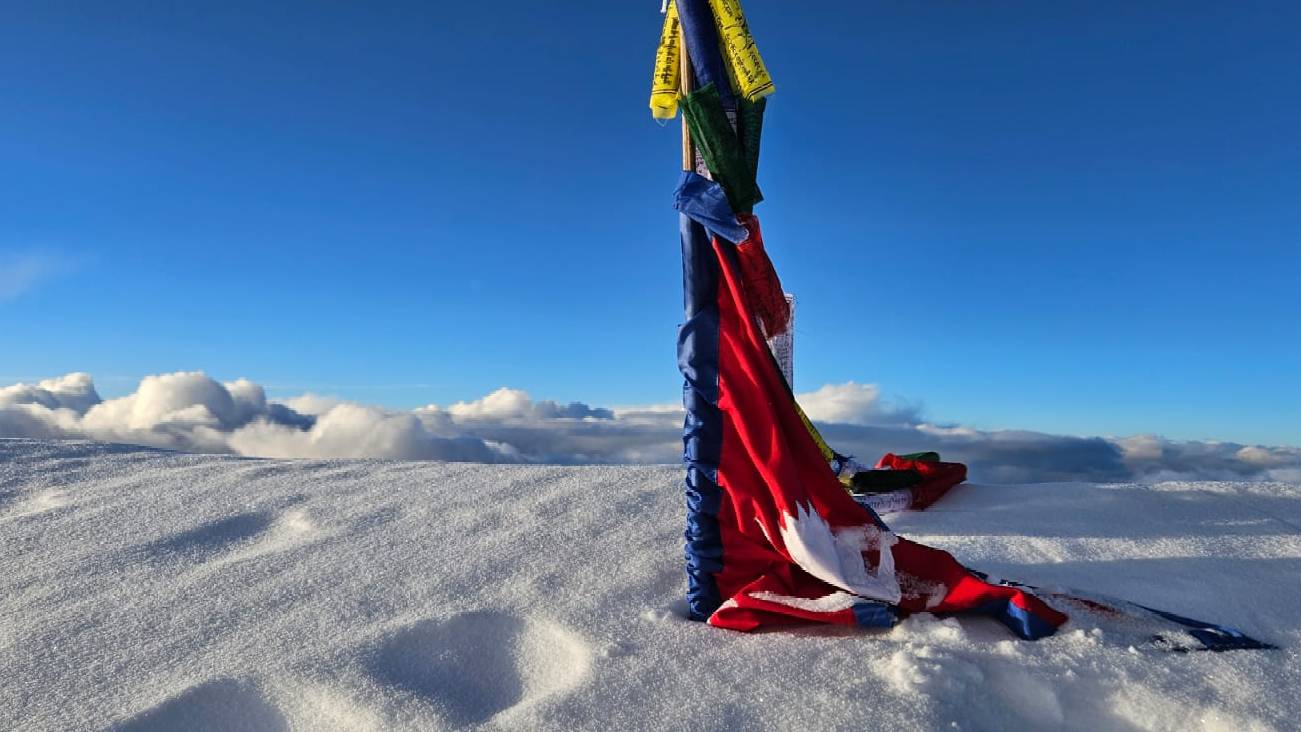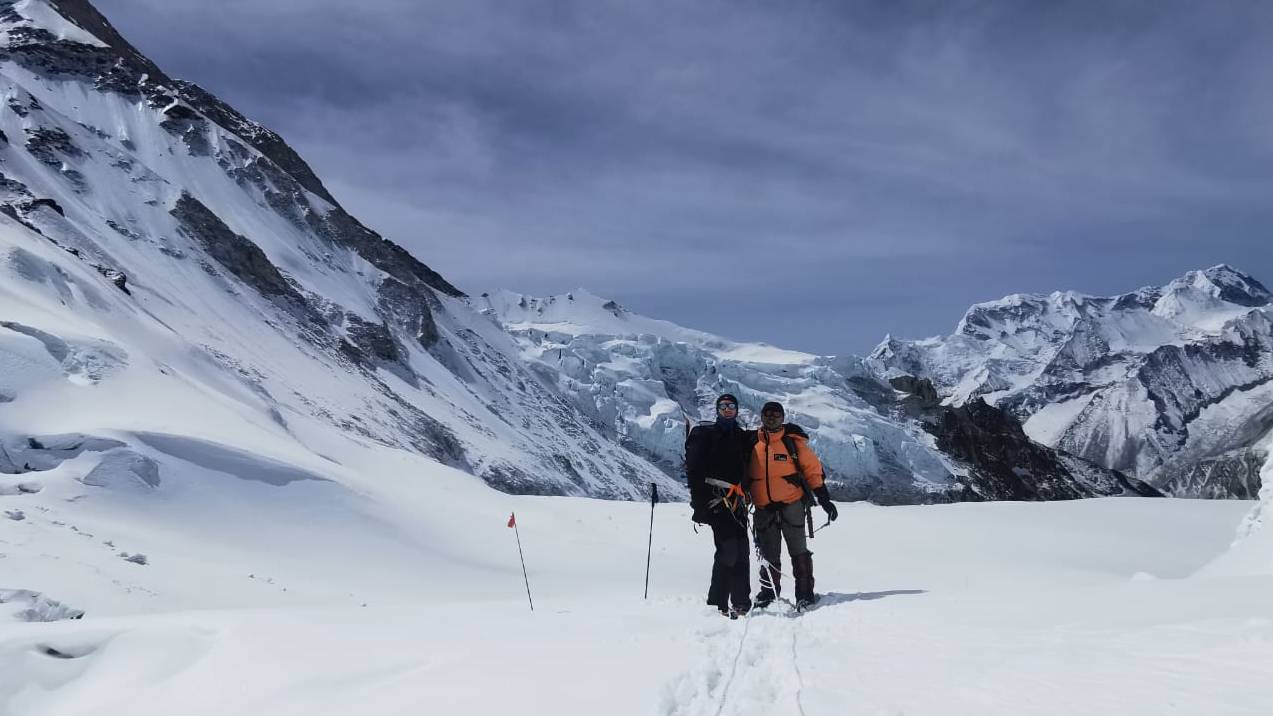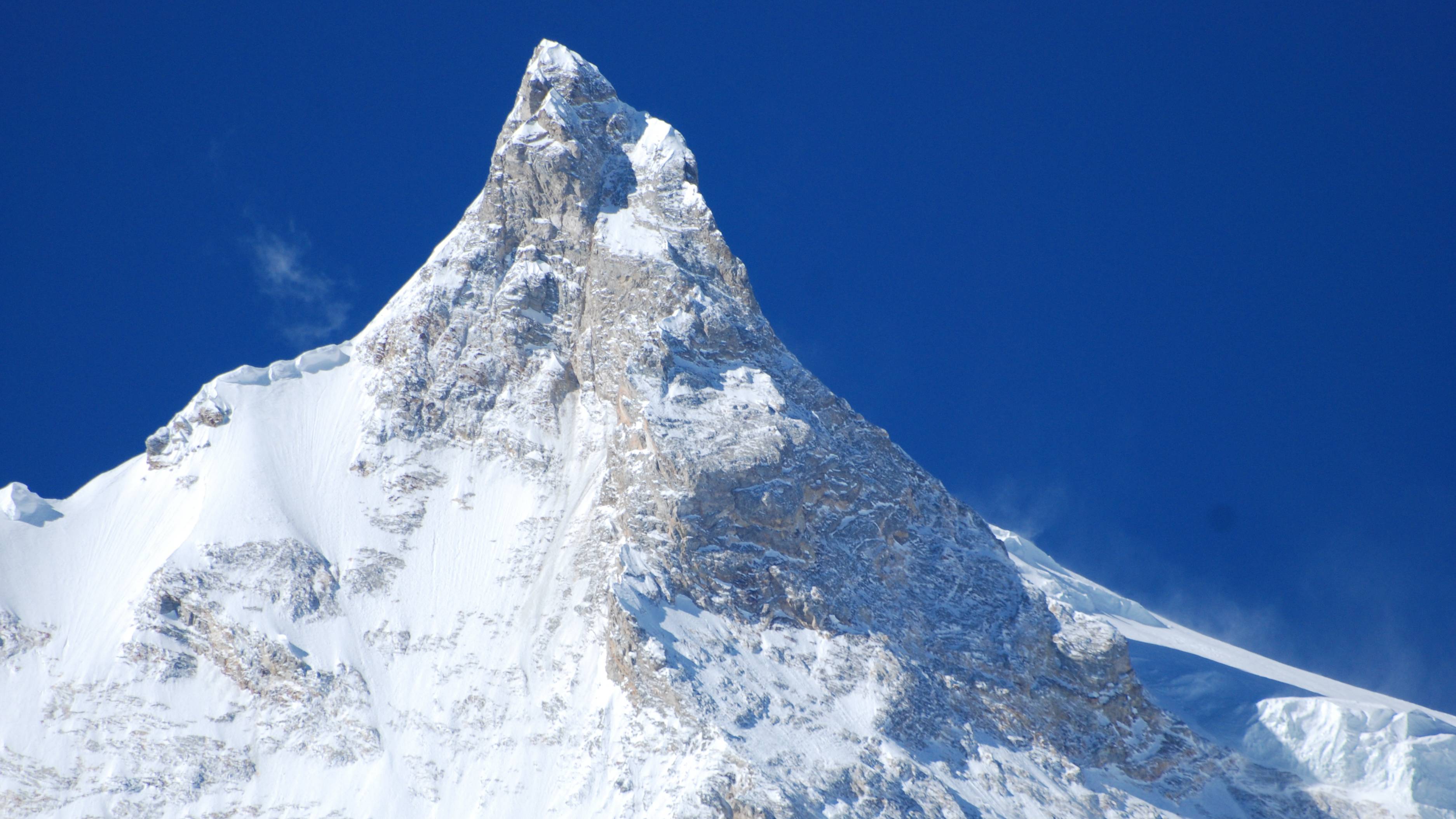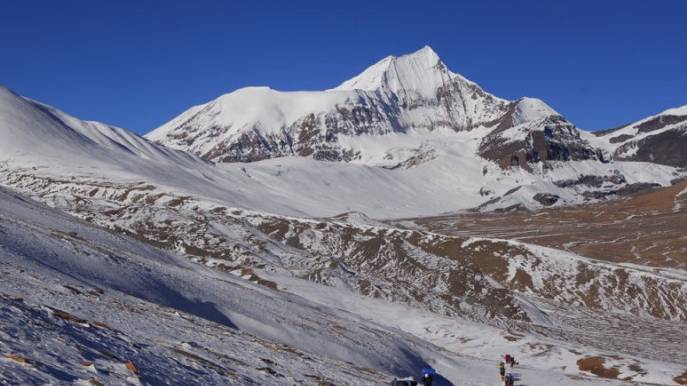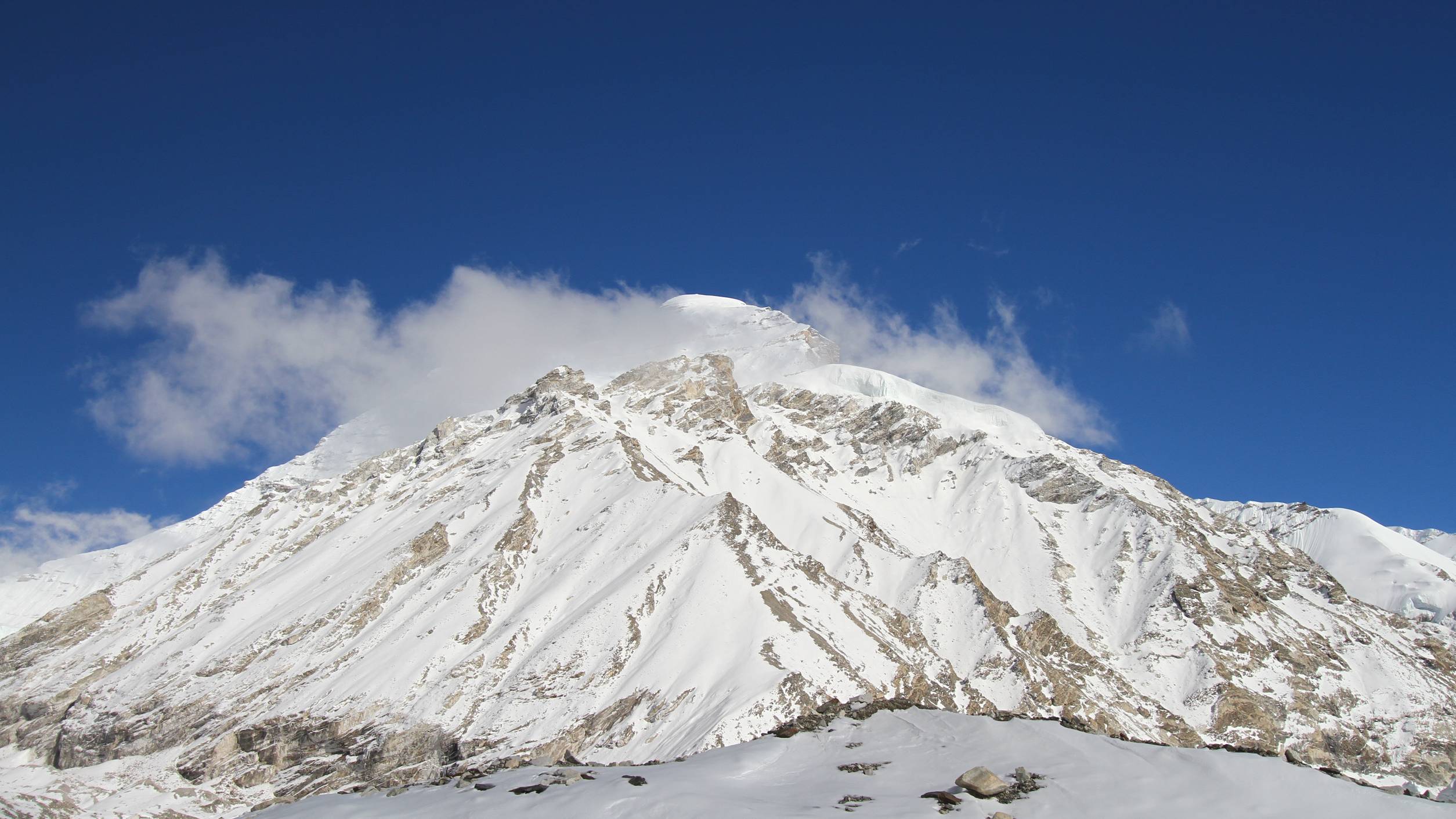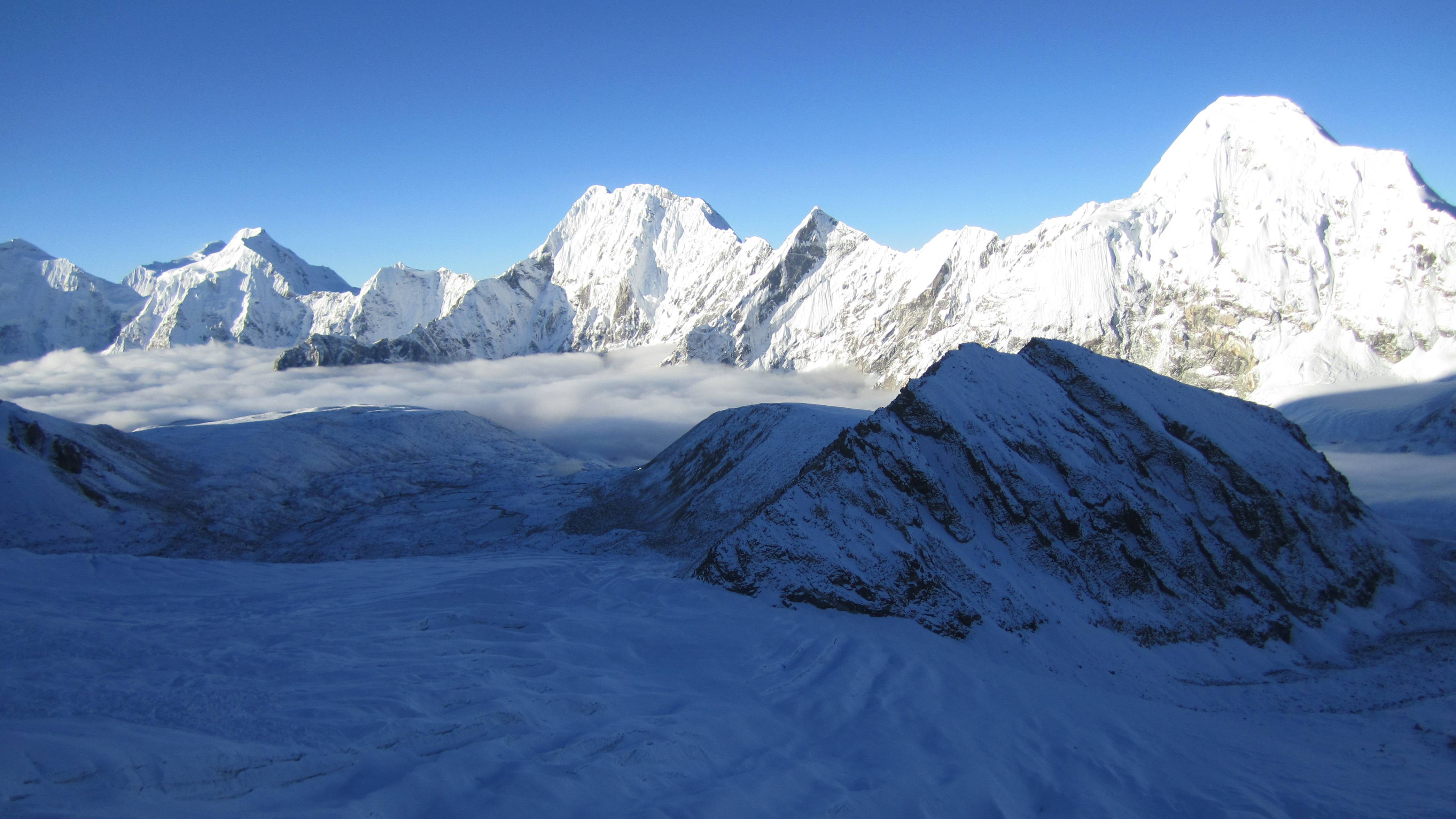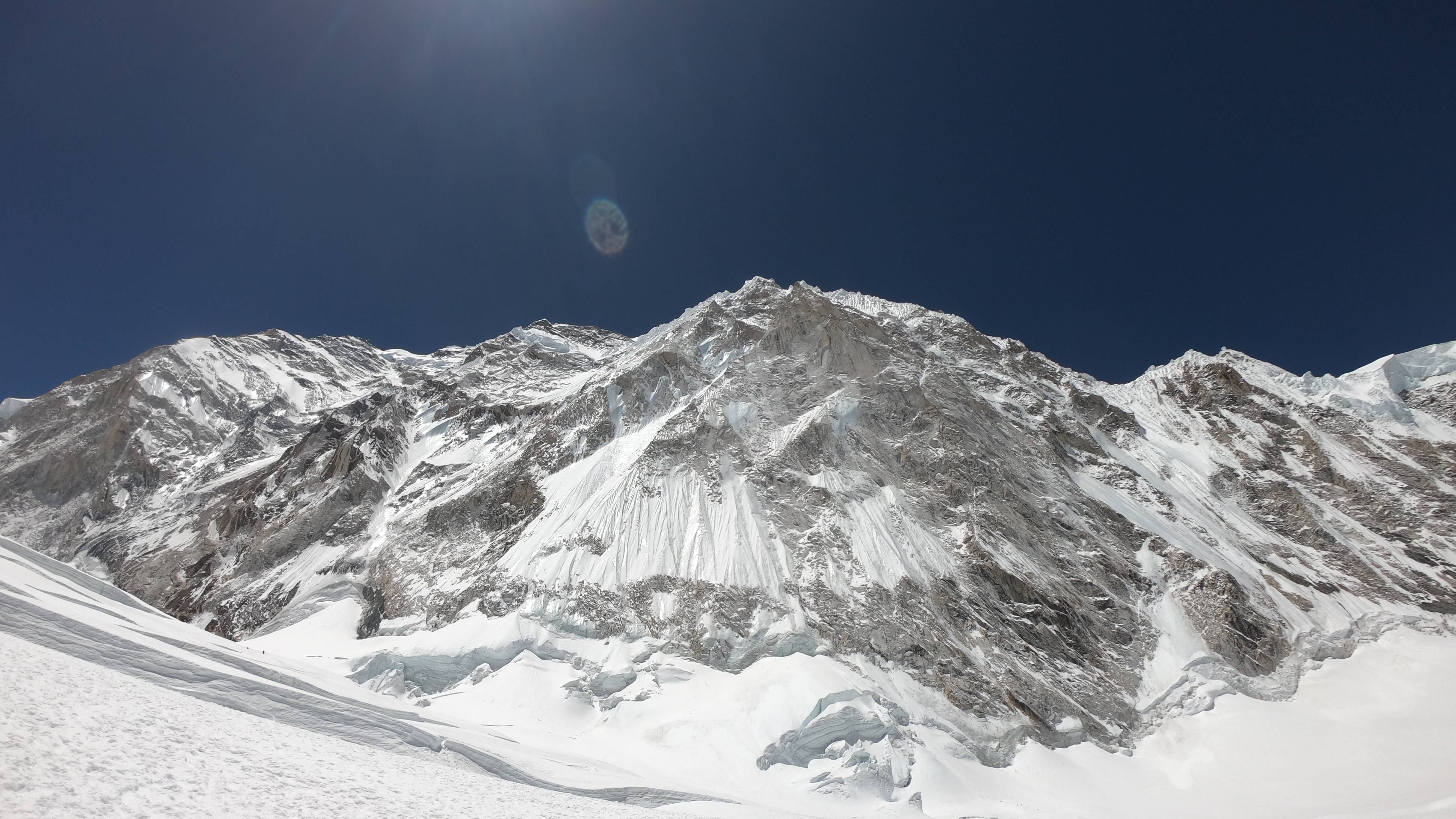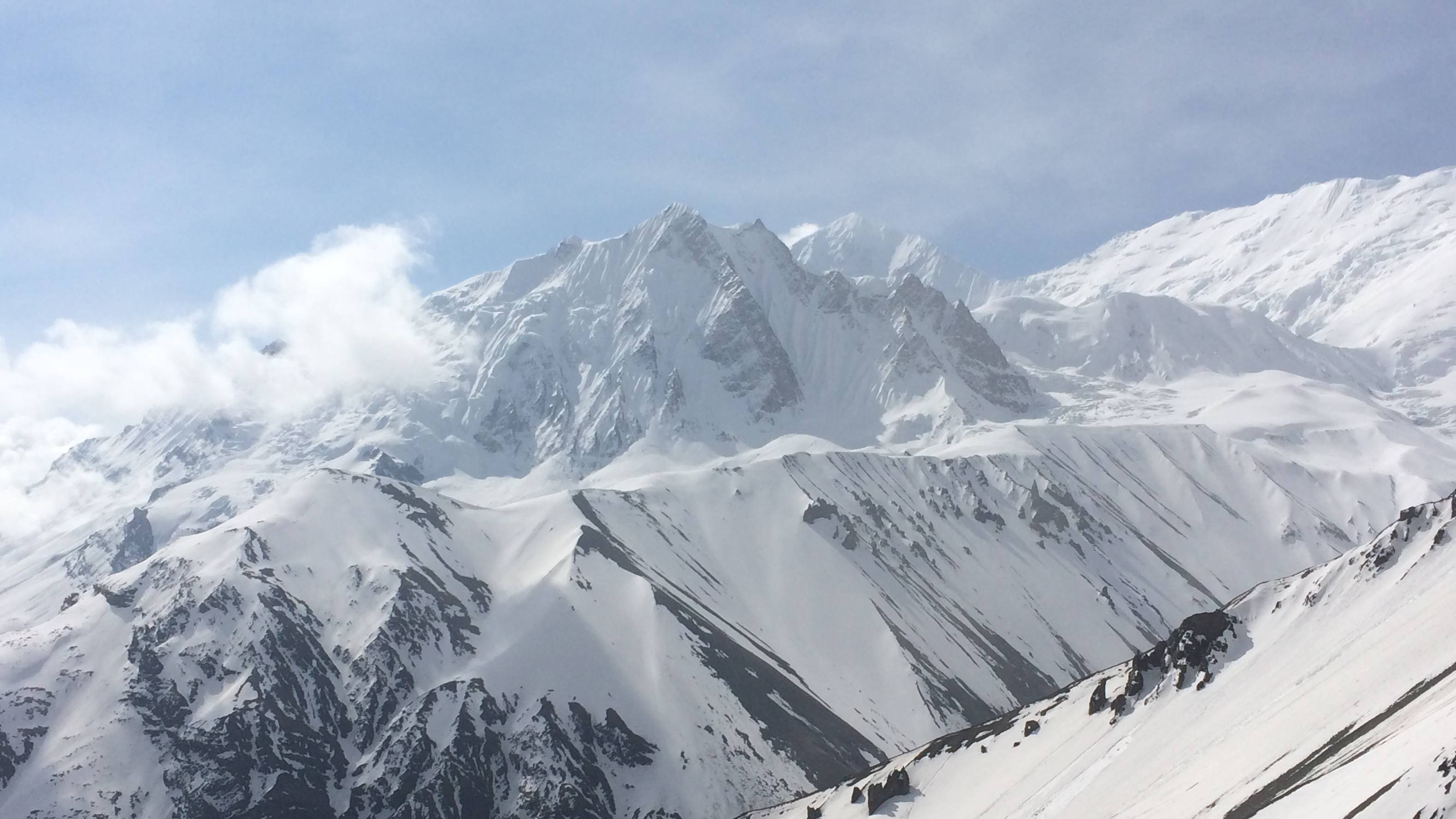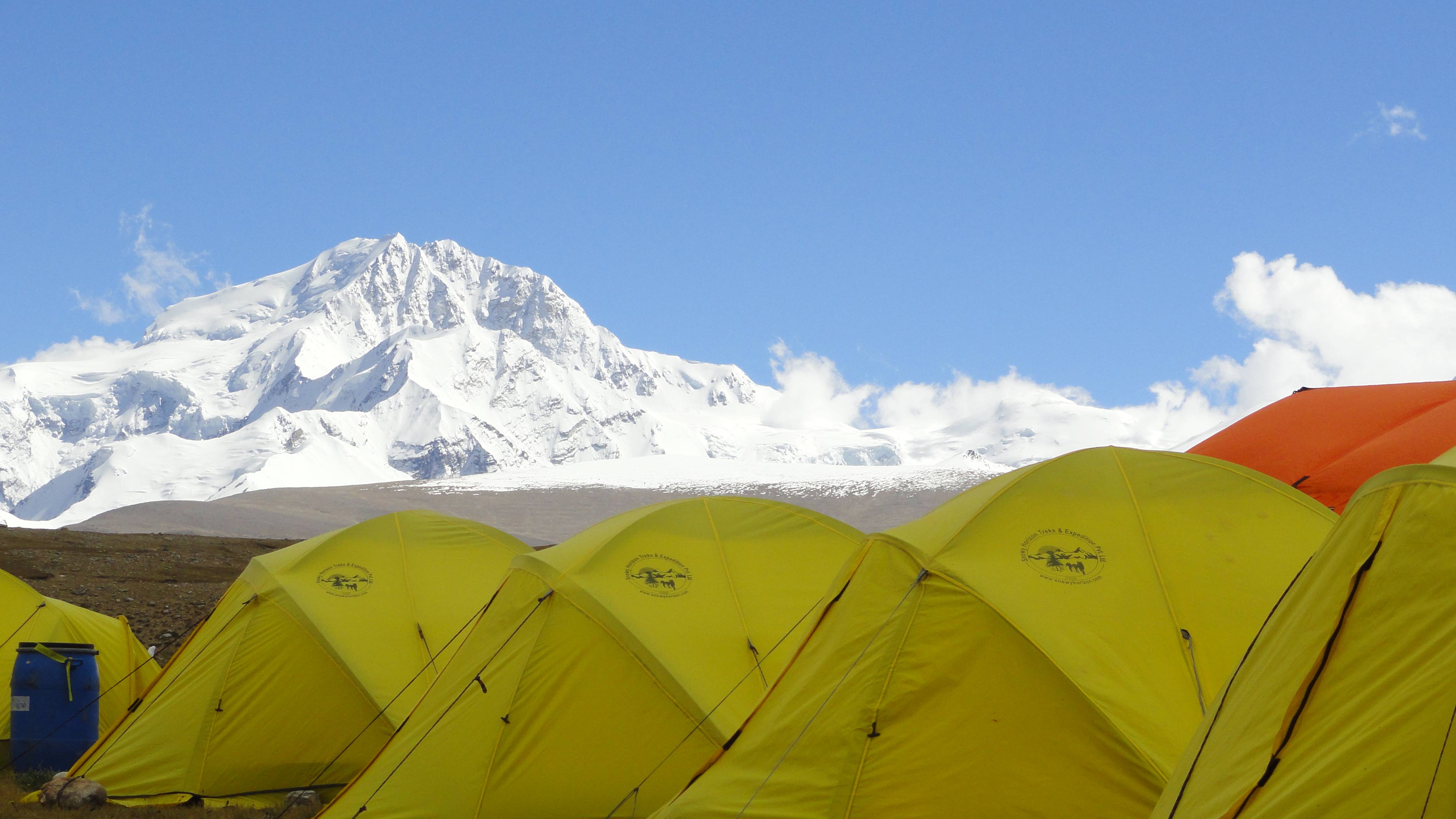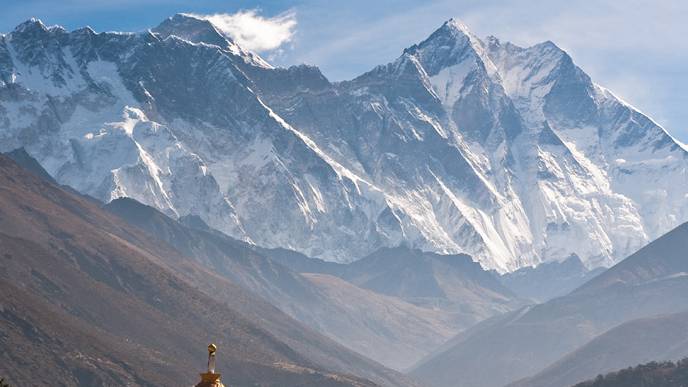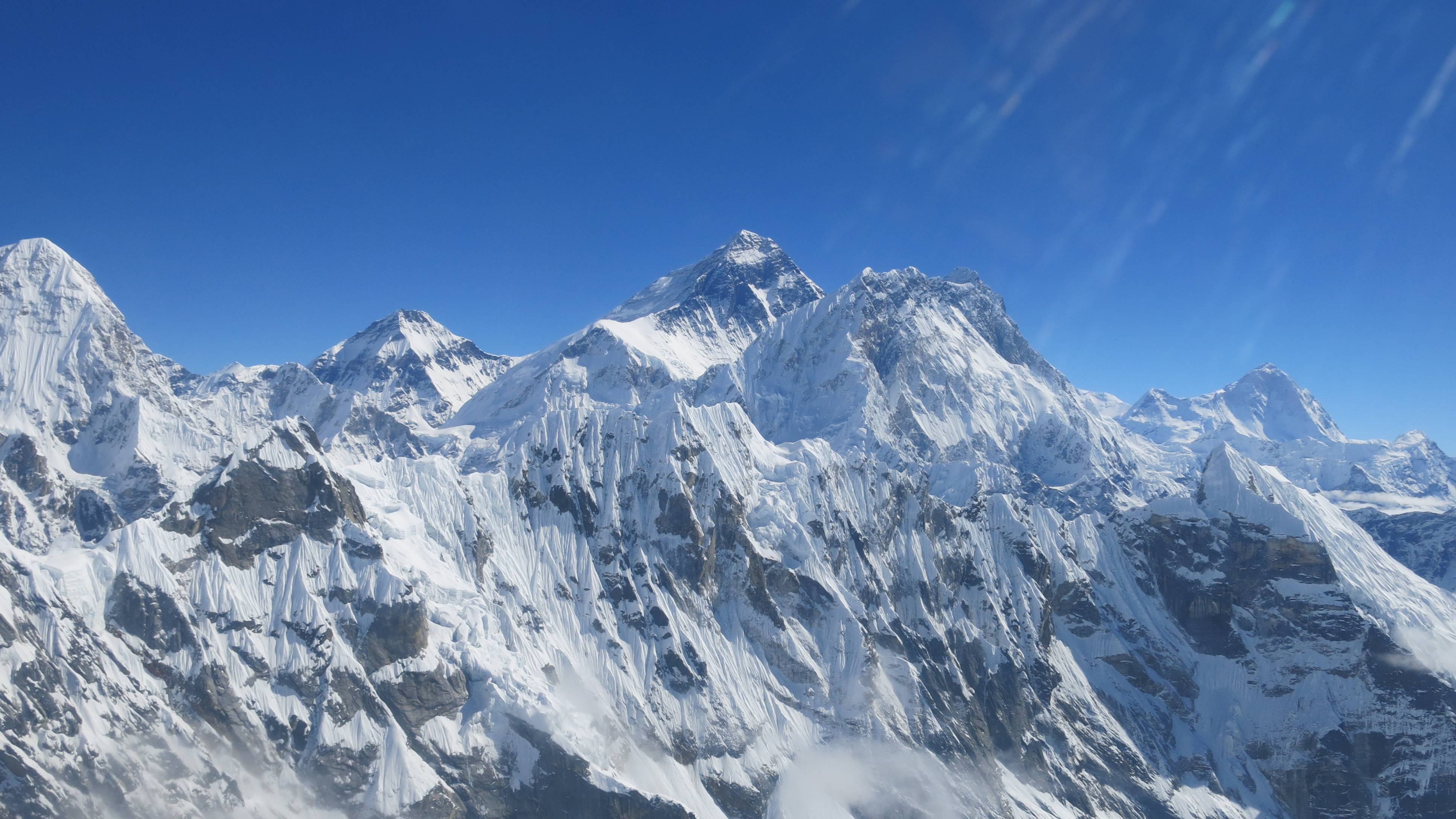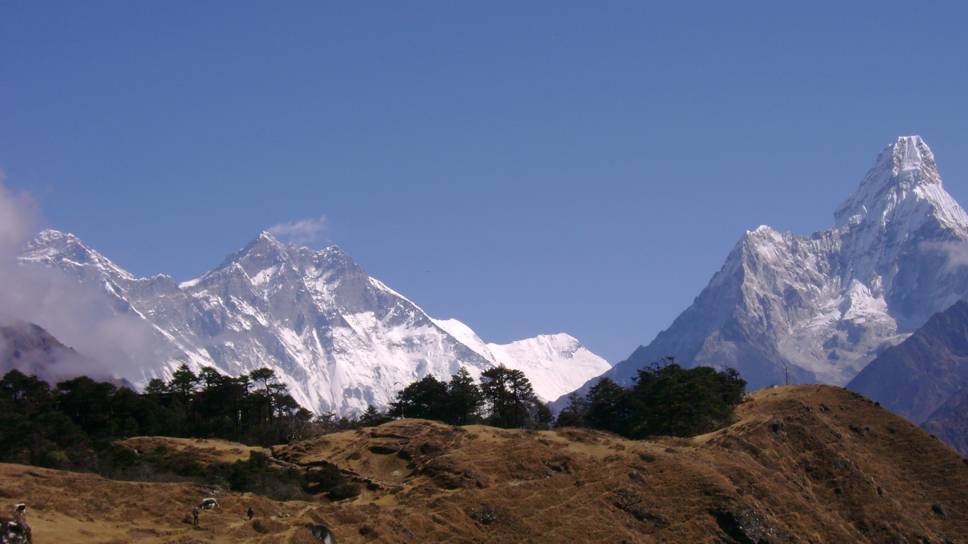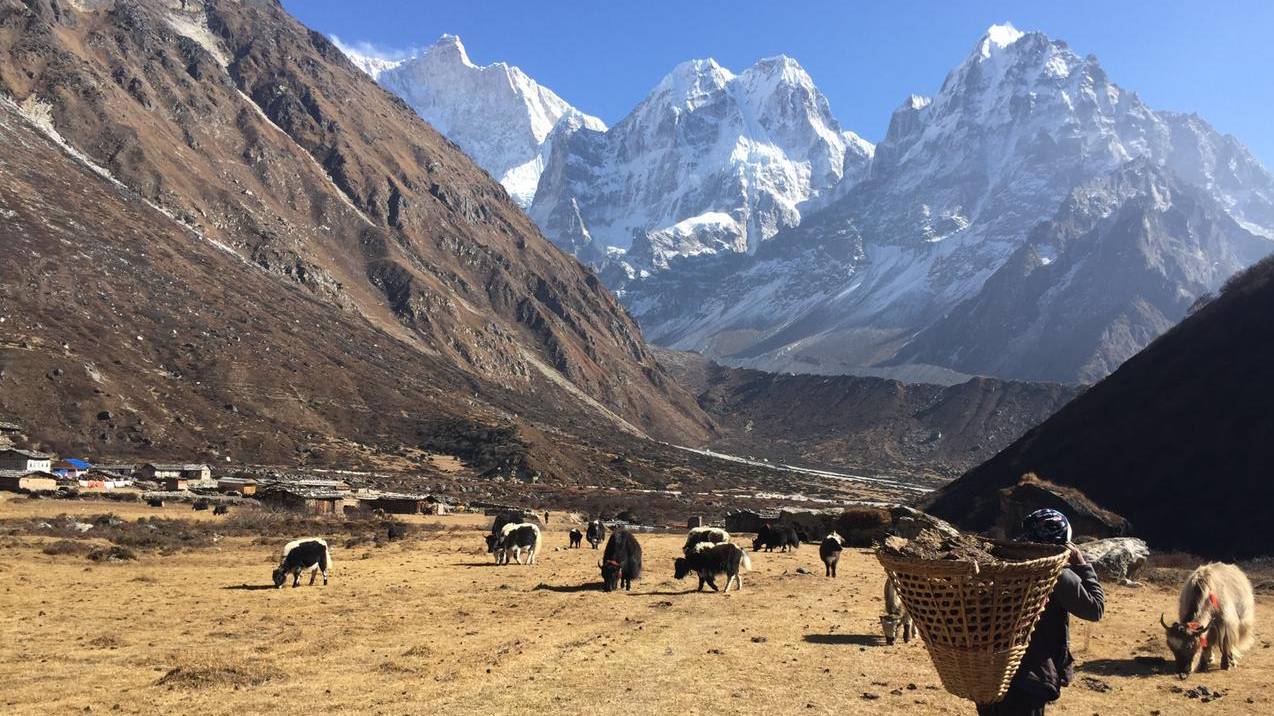Lobuche Peak Climbing
Overview
"Join us on an unforgettable trip to Lobuche Peak – one of the ‘most popular trekking peaks’ in Nepal. Conveniently located in the Khumbu region, the climb can be easily combined with a trekking tour of the region."
Lobuche Peak is a popular destination for mountaineers situated just above the Lobuche village in the Khumbu Region not far from Mt. Everest. Climbing Lobuche peak is a perfect challenging activity addition for a visit to the Khumbu region. We at Snowy Horizon have plenty of experience with this mountain and would be keen to take you on this adventure. The peak is technically not too challenging for climbers with some experience (rated PD+) but no mountain should be underestimated with the usual dangers arising from altitude, exposure, and weather conditions.
Lobuche has two different summits- Lobuche East Peak (6119m) and Lobuche West Peak (6145m) connected via a knife-edge ridge. Base Camp is located not far from the Lobuche village to the south. It gives easy access to the south ridge. Lobuche East has a very dramatic edge to the east, forming a three-ridged pyramid. South and Southeast Ridges form a typical rock triangle extending to the Khumbu glacier moraine. The peak dramatically towers over the village and is easily identifiable from the Everest trail.
We approach Lobuche via the Everest trail from Lukla, after a short 35-minute flight from Kathmandu and 20 minutes from Manthali, Ramechhap. We make our way through various Sherpa villages towards Namche Bazaar – the key-trading town of the region providing access to the higher valleys. We continue to the famous monastery Tyangboche (Tengboche) on the way to which we should get our first view of Everest and Lhotse. We continue to Gorak Shep (5170m) as part of the acclimatization phase. We then take on Kala Patthar (5545m), a satellite peak of Pumori, for a classic view of Mt. Everest and the Khumbu Icefall. We can visit Everest Base Camp (EBC), which is only a short hike away. We then return to Lobuche where we pick up supplies and trek to High camp (5600m). Allowing for a further 1 day of acclimatization if required, we then start the climb along the South Ridge to the summit (6119m).
The views from the base camp, the climbing route and ultimately the summit are superb. The summit ridge offers a 360-degree panorama of the region including Ama Dablam, Pumori, and Everest. Certainly an unforgettable experience!
Team Snowy Horizon offers you a full board package for Lobuche including the climbing permit from the NMA and all other necessary logistics from arrival in Kathmandu up to your final departure. We organize your accommodation in Kathmandu as well as throughout your trek, our cooks freshly prepare you nutritious meals throughout the climbing period and experienced and professional trekking and climbing guides accompany you on the trek as well as the climb. In addition, we can organize any sightseeing in and around Kathmandu. Upon your request, we can also offer only base camp service (including the climbing permit) where the climber may arrange all required logistics for any part of the climb above base camp.
The package can be flexibly adjusted to your requirements. Please feel free to contact us at any time for suggestions and advice. We’d be happy to take you on this adventure at your desire.
Day-to-Day Itinerary:
Day 01: Arrival at Kathmandu Airport and transfer to hotel
Day 02: Rest, last-minute shopping, preparation and briefing in Kathmandu.
Day 03: Drive to Manthali, Fly to Lukla (2837m) trek to Phakding (2610m-3 Hrs.); lodge.
Day 04: Trek from Phakding to Namche Bazar (3450m-7 Hrs.); lodge.
Day 05: Rest in Namche Bazaar, and hike to Hotel Everest View (HEV) for acclimatization.
Day 06: Trek from Namche to Tyangboche (3870m-5 Hrs.); lodge.
Day 07: Trek from Tyangboche to Dingboche (4390m-6 Hrs.); lodge.
Day 08: Rest and acclimatization in Dingboche, explore hiking.
Day 09: Trek from Dingboche to Lobuche (4930m-5 Hrs.); lodge.
Day 10: Trek to Gorak Shep (5160m), explore Everest Base Camp (5300m) and back; lodge.
Day 11: Explore sunrise at Kala Patthar (5545m) and trek back to Lobuche; lodge.
Day 12: Trek to Lobuche Peak High Camp (5500m-3 Hrs.); camping
Day 13: Climb Lobuche East (6090m) summit and return to Base Camp (10hrs), camping.
Day 14: Trek from Lobuche Base Camp to Pangboche (3850m-6 Hrs.); lodge.
Day 15: Trek from Pangboche to Namche Bazar (3445m-5 Hrs.); lodge.
Day 16: Trek from Namche Bazaar to Lukla (2850m-8 Hrs.); lodge.
Day 17: Fly to Manthali, Drive to Kathmandu, transfer to Hotel; farewell dinner.
Day 18: Contingency or leisure day in Kathmandu; hotel.
Day 19: Transfer to the airport for your final destination.
Day-to-Day Itinerary:
Day 01: Arrival at Kathmandu Airport and transfer to hotel
Day 02: Rest, last-minute shopping, preparation and briefing in Kathmandu.
Day 03: Drive to Manthali, Fly to Lukla (2837m) trek to Phakding (2610m-3 Hrs.); lodge.
Day 04: Trek from Phakding to Namche Bazar (3450m-7 Hrs.); lodge.
Day 05: Rest in Namche Bazaar, and hike to Hotel Everest View (HEV) for acclimatization.
Day 06: Trek from Namche to Tyangboche (3870m-5 Hrs.); lodge.
Day 07: Trek from Tyangboche to Dingboche (4390m-6 Hrs.); lodge.
Day 08: Rest and acclimatization in Dingboche, explore hiking.
Day 09: Trek from Dingboche to Lobuche (4930m-5 Hrs.); lodge.
Day 10: Trek to Gorak Shep (5160m), explore Everest Base Camp (5300m) and back; lodge.
Day 11: Explore sunrise at Kala Patthar (5545m) and trek back to Lobuche; lodge.
Day 12: Trek to Lobuche Peak High Camp (5500m-3 Hrs.); camping
Day 13: Climb Lobuche East (6090m) summit and return to Base Camp (10hrs), camping.
Day 14: Trek from Lobuche Base Camp to Pangboche (3850m-6 Hrs.); lodge.
Day 15: Trek from Pangboche to Namche Bazar (3445m-5 Hrs.); lodge.
Day 16: Trek from Namche Bazaar to Lukla (2850m-8 Hrs.); lodge.
Day 17: Fly to Manthali, Drive to Kathmandu, transfer to Hotel; farewell dinner.
Day 18: Contingency or leisure day in Kathmandu; hotel.
Day 19: Transfer to the airport for your final destination.
Full Board Service Cost : Please contact us by email or call us
Cost Include
- All arrival and departure transfers to and from Airports.
- Assistance at the airports by Snowy Horizon’s representative.
- Necessary surface transport as per itinerary.
- 3 nights hotel accommodations in Kathmandu on BB Plan.
- 1-night Hotel accommodation in Mulkot Sindhuli on MAP plan.
- Experienced trekking guide (s) and 1:1 porter (s) during the trekking carrying 30 kg maximum weight.
- Experienced and certified peak climbing Sherpa as per required.
- Flight Tickets for Ramechhap-Lukla-Ramechhap with two-way transportation from Kathmandu.
- Base camp camping equipment like camp furniture, kitchenware, tents, etc.
- 3 meals a day (Breakfast, Lunch and Dinner) and sharing teahouse accommodation during the trekking.
- 3 meals a day (BLD with tea or coffee) and sharing tented camp accommodation during climbing at BC.
- Necessary high altitude food for climbing members and Sherpa for high camps.
- Khumbu Village and Everest National Park entry fees and Peak Base Camp Camping fee.
- Climbing permit for Lobuche peak from Nepal Mountaineering Association (NMA).
- All wages, equipment, medical and accidental Insurance for the involved staffs.
- First Aid medical kits for the Group and the staffs.
- Required fixed and dynamic rope during the climbing period through climbing Sherpa.
- All necessary paper works and Government Taxes levied in Nepal.
- Complete pre-departure information, and flight ticket reconfirmation.
- Farewell dinner in a typical Nepali restaurant with a domestic culture show in Kathmandu.
- Snowy Horizon Special Gifts (T-shirt/Pashmina etc.)
- Our service Charges
Cost Exclude
- Lunch and dinner during your stay in Kathmandu except for farewell dinner.
- Items of personal nature, like phone calls, Internet use, and laundry expenses.
- Clothing, packing items or bags, personal medical kit, personal trekking gears.
- Any extra services or products or offers or activities that are not mentioned in the itinerary
- Any extra expenses arising out of various unforeseen situations.
- Any additional staff other than specified.
- Rescue, repatriation, medicines, medical tests and hospitalization expenses.
- International airfares, medical and travel insurance.
- Nepal entry visa fee (Visa issuance is easy at the arrival)
- Filming, Walkie-Talkie, satellite phone and Drone Camera filming permits.
- Tips, gifts, souvenirs.
- Any other item not mentioned in the “Service Include” section.
Notes
- Cost defers on Hotel Category for Hotels in Kathmandu.
- The itinerary is changeable and modifiable as per the needs and time frame of the clients.
- The cost will be re-calculated if the itinerary is changed or modified.
- Additional activities may be added as per request with nominal additional cost.
- For any kind of changes please contact us by email or call us.
- Grade: Peak Climbing
- Elevation: 6,119m (20,075ft)
- Location: Khumbu region
- Coordinates: 27°57'29"N 86°47'29"E
- First Ascent: Laurice Nielson and Ang Gyalzen Sherpa; 25 April 1984
- Season: Spring (February-May) and Autumn (September-December)
- Duration: 19 days (typically)
- Group Size: 02-15 person per Group

